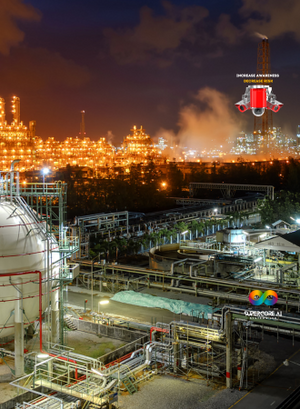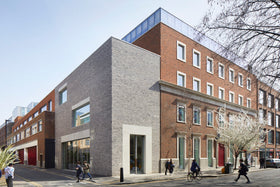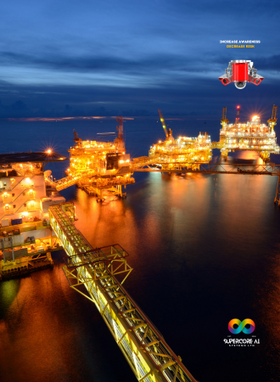Image sensor
1/1.8” progressive scan RGB CMOS
Lens
Varifocal, 3.9–10 mm, F1.5
Horizontal field of view: 96°–44°
Vertical field of view: 63°–26°
Autofocus, i-CS lens, IR corrected, remote zoom and focus, P-Iris control
Minimum focus distance: 0.5 m (1.6 ft)
Day and night
Automatically removable infrared-cut filter
Minimum illumination
4 MP 25/30 fps with advanced WDR imaging technology and Advanced low-light technology
Color: 0.05 lux at 50 IRE, F1.5
B/W: 0.01 lux at 50 IRE, F1.5
4 MP 50/60 fps with Advanced low-light technology
Color: 0.1 lux at 50 IRE, F1.5
B/W: 0.02 lux at 50 IRE, F1.5
0 lux with IR illumination on
Shutter speed
1/47500 s to 1 s
Profiles
Area monitoring
Road monitoring
Sensor
FMCW (Frequency Modulated Continuous Wave)
Object data
Object type (classes: humans, vehicles, unknown), range, direction, velocity
Frequency
Channel 1: 61.00–61.25 GHz
Channel 2: 61.25–61.50 GHz
RF transmit power
<100 mW (EIRP)
License free. Unharmful radio-waves.
Recommended mounting
height
3.5–12 m (11–39 ft)
Recommended mounting
tilt
15–45°
Detection range
Area monitoring profile: 5–60 m (16–200 ft) when detecting a person
5–90 m (16–300 ft) when detecting a vehicle
Road monitoring profile: Up to 150 m when detecting a vehicle
Radial speed
Area monitoring profile: Up to 55 km/h (34 mph)
Road monitoring profile: up to 200 km/h (125 mph)
Field of detection
Horizontal: 95°
Speed accuracy
+/- 2 km/h (1.25 mph)
Distance accuracy
Area monitoring profile: 0.5 m (1.6 ft)
Road monitoring profile: 0.8 m (2.6 ft)
Angle accuracy
1°
Spatial differentiation
3 m
Data refresh rate
10 Hz
Coverage
Area monitoring profile: 2700 m2 (29000 sq ft) for persons
6100 m2 (65600 sq ft) for vehicles
Coexistence zone
Frequency band: 61 GHz
Radius:
350 m (1148 ft)
Recommend
number of radars: up to 8
Radar controls
Multiple
detection zones, line crossing detection with one or two lines, exclude zones
with filters for short-lived objects, object speed, and object type,
configurable trigger duration
Radar
transmission on/off, reference map, grid opacity, zone opacity, color scheme,
trail lifetime, detection sensitivity, swaying object filter, small object
filter, frequency channel
System on Chip model
Manufacturer’s
own chipset (8th gen)
Memory
2048
MB RAM, 8194 MB Flash
Compute capabilities
Deep
learning processing unit (DLPU)
Video compression
H.264
(MPEG-4 Part 10/AVC) Baseline, Main and High Profiles
H.265
(MPEG-H Part 2/HEVC) Main Profile
Motion
JPEG
Resolution
16:9
2688x1512 Quad HD to 160x90
4:3
2016x1512 to 160x120
Frame rate
No
WDR: Up to 60/50 fps (60/50 Hz) in all resolutions
WDR:
Up to 30/25 fps (60/50 Hz) in all resolutions
Video streaming
Multiple,
individually configurable streams in H.264, H.265 and Motion JPEG
Controllable
frame rate and bandwidth
VBR/ABR/MBR
H.264/H.265
Low latency mode
Video
streaming indicator
Image settings
Saturation,
contrast, brightness, advanced WDR imaging technology: Up to 120 dB depending
on scene, white balance, day/night threshold, tone mapping, exposure mode,
exposure zones, defogging, electronic image stabilization, compression, dynamic
text and image overlay, polygon privacy mask
Scene
profiles: forensic, vivid, traffic overview
Audio streaming
Two-way,
full duplex
Noise
reduction
Audio encoding
24bit
LPCM, AAC-LC 8/16/32/48 kHz, G.711 PCM 8 kHz, G.726 ADPCM 8 kHz, Opus 8/16/48
kHz
Configurable
bit rate
Audio input/output
External
microphone input or line input, line output, ring power, digital audio input,
automatic gain control
Network protocols
IPv4,
IPv6 USGv6, HTTP, HTTPS, HTTP/2, TLS, QoS Layer 3 DiffServ, FTP, SFTP,
CIFS/SMB, SMTP, Bonjour, UPnP®, SNMP v1/v2c/v3 (MIB-II), DNS, DynDNS, NTP,
RTSP, RTP, SRTP/RTSPS, TCP, UDP, IGMPv1/v2/v3, RTCP, ICMP, DHCPv4/v6, ARP,
SOCKS, SSH, LLDP, MQTT v3.1.1, Secure syslog (RFC 3164/5424, UDP/TCP/TLS)
Application Programming
Interface
Open
API for software integration
ONVIF®
Profile G, ONVIF® Profile M, ONVIF® Profile S, and ONVIF® Profile T,
specification at onvif.org
Onscreen controls
Electronic
image stabilization
Day/night
shift
Defogging
Wide
dynamic range
Video
streaming indicator
IR
illumination
Heater
Edge-to-edge
Speaker
pairing
PTZ
camera pairing
Event conditions
Analytics,
object data, external input, supervised external input, edge storage events,
virtual inputs through API
Radar
motion detection
Radar
data failure
Audio:
audio detection
Device
status: above operating temperature, above or below operating temperature,
below operating temperature, IP address removed, network lost, new IP address,
shock detected, storage failure, system ready, within operating temperature,
casing open
Edge
storage: recording ongoing, storage disruption
I/O:
digital input, manual trigger, virtual input
Scheduled
and recurring: scheduled event
Video:
live stream open
Event actions
Overlay
text, external output activation, play audio clip, zoom preset
I/O:
toggle I/O once, toggle I/O while the rule is active
Illumination:
use lights, use lights while the rule is active
MQTT:
publish
Notification:
HTTP, HTTPS, TCP, and email
Pre-
and post-alarm video or image buffering for recording or upload
Radar:
radar autotracking, radar detection
Record
video: SD card and network share
SNMP
traps: send, send while the rule is active
Upload
of images or video clips: FTP, SFTP, HTTP, HTTPS, network share, and email
Data streaming
Video,
radar, and fusion metadata with relative position, GPS position, velocity,
direction, and object type
Built-in installation
aids
Remote
zoom and focus, remote back focus, leveling assistant, pixel counter
Applications
Included
object
analytics, manufacturer Scene Metadata
video
motion detection
speed
monitor
Supported
License
plate verifier
Support
for enabling installation of third-party applications
Object Analytics
Object
classes (radar-video fusion): humans, vehicles
Object
classes (video only): humans, vehicles (types: cars, buses, trucks, bikes,
other)
Scenarios
(radar-video fusion): line crossing, object in area
Scenarios
(video only): crossline counting, occupancy in area, time in area
Up
to 10 scenarios
Key
features: detection sensitivity, object speed
Other
features: triggered objects visualized with color-coded bounding boxes
Polygon
include/exclude areas
Perspective
configuration
ONVIF
Motion Alarm event
Scene metadata
Object
classes: humans, faces, vehicles (types: cars, buses, trucks, bikes), license
plates
Object attributes: vehicle color, upper/lower clothing color, confidence,
position
EMC
EN
55032 Class A, EN 55035, EN 61000-3-2, EN 61000-3-3, EN 61000-6-1, EN
61000-6-2, EN 50121-4
Australia/New
Zealand: CISPR 24, CISPR 35, RCM AS/NZS CISPR 32 Class A
Canada:
ICES-3(B)/NMB-3(B)
Japan:
VCCI Class A
Korea:
KS C 9832 Class A, KS C 9815, KS C 9835, KS C 9547
USA:
FCC Part 15 Subpart B Class B
Railway:
IEC 62236-4
Safety
IEC/EN/UL
62368-1, IEC/EN/UL 60950-22, IEC 62471, IS 13252
Environment
IEC
60068-2-1, IEC 60068-2-2, IEC 60068-2-6, IEC 60068-2-14, IEC 60068-2-27, IEC
60068-2-78, IEC/EN 60529 IP66, IEC/EN 62262 IK10, NEMA 250 Type 4X, NEMA
TS 2 (2.2.7-2.2.9), ISO 21207 (Method B)
Wireless
EN
305550, EN 301489-1, EN 301489-3, EN 62311, FCC Part 15 Subpart C
Network
NIST
SP500-267
Cybersecurity
ETSI
EN 303 645, FIPS 140
Edge security
Software:
Signed OS, brute force delay protection, digest authentication and OAuth 2.0
RFC6749 OpenID Authorization Code Flow for centralized ADFS account management,
password protection, AES-XTS-Plain64 256bit SD card encryption
Hardware:
cryptographic compute module cybersecurity platform
TPM
2.0 (CC EAL4+, FIPS 140-2 Level 2), secure element (CC EAL 6+), system-on-chip
security (TEE), Manufacturer's device ID, secure keystore, signed video, secure
boot, encrypted filesystem (AES-XTS-Plain64 256bit)
Network security
IEEE
802.1X (EAP-TLS, PEAP-MSCHAPv2), IEEE 802.1AE (MACsec PSK/EAP-TLS), IEEE
802.1AR, HTTPS/HSTS, TLS v1.2/v1.3, Network Time Security (NTS), X.509
Certificate PKI, host-based firewall
Casing
IP66-,
and NEMA 4X-rated, IK10 impact-resistant aluminum enclosure with integrated
dehumidifying membrane
weathershield
with black anti-glare coating
Color:
white NCS S 1002-B
For
repainting instructions, go to the product’s support page. For information
about the impact on warranty, go to /warranty-implication-when-repainting.
Sustainability
PVC
free, BFR/CFR free, 2% recycled plastics, 6% bio-based plastics
Power
Power
over Ethernet (PoE) IEEE 802.3at Type 2 Class 4
Typical
10 W, max 25.5 W
10–28
VDC, typical 9.5 W, max 25.5 W
Power
redundancy
Connectors
RJ45
10BASE-T/100BASE-TX/1000BASE-T PoE
Terminal
block for two supervised and two unsupervised configurable inputs / digital
outputs (12 VDC output, max load 50 mA)
RS485/RS422,
2 pcs, 2 pos, full duplex, terminal block
DC
input, terminal block, 3.5 mm mic/line in, 3.5 mm line out
IR illumination
IR
with power-efficient, long-life 850 nm IR LEDs
Range
of reach 38 m (125 ft) or more depending on the scene
Illumination LED
Power-efficient,
long-life white LED
Range
of reach 18 m (60 ft) or more depending on the scene
Storage
Support
for microSD/microSDHC/microSDXC card
Support for SD card encryption (AES-XTS-Plain64 256bit)
Recording
to network-attached storage (NAS)
For
SD card and NAS recommendations, refer to the manufacturer's webpage
Operating conditions
-40
°C to 60 °C (-40 °F to 140 °F)
Start-up
at -30 °C (-22 °F)
Maximum
temperature according to NEMA TS 2 (2.2.7): 74 °C (165 °F)
Humidity
10–100% RH (condensing)
Storage conditions
-40
°C to 65 °C (-40 °F to 149 °F)
Humidity
5–95% RH (non-condensing)
Dimensions
404
x 159 x 234 mm (16 x 6.3 x 9.2 in)
Weight
5
kg (11 lb)
Supporting software
radar
autotracking for PTZ (Slew to Cue)
Languages
English,
German, French, Spanish, Italian, Russian, Simplified Chinese, Japanese,
Korean, Portuguese, Polish, Traditional Chinese, Dutch, Czech, Swedish,
Finnish, Turkish, Thai, Vietnamese
Warranty
5-year
warranty










